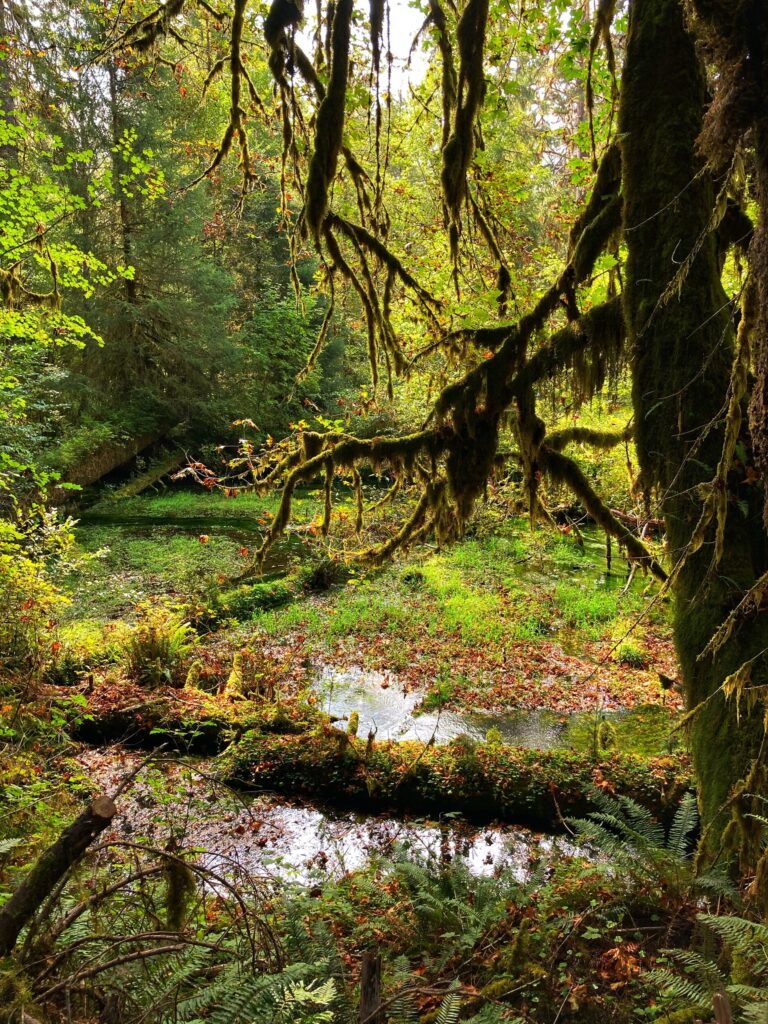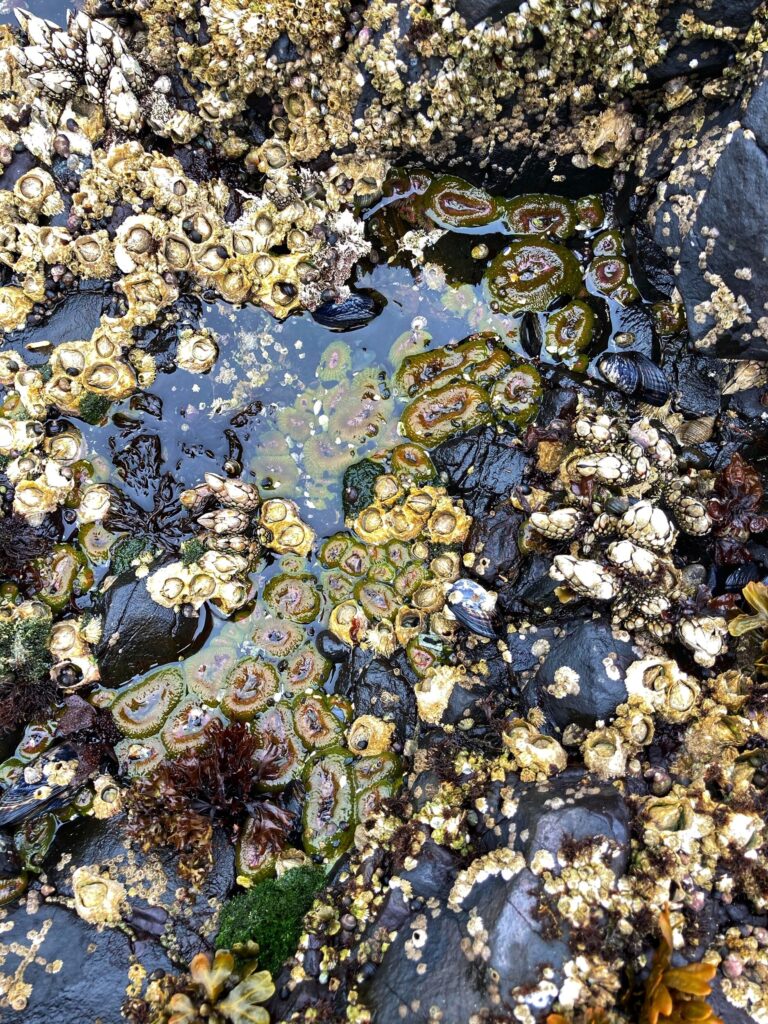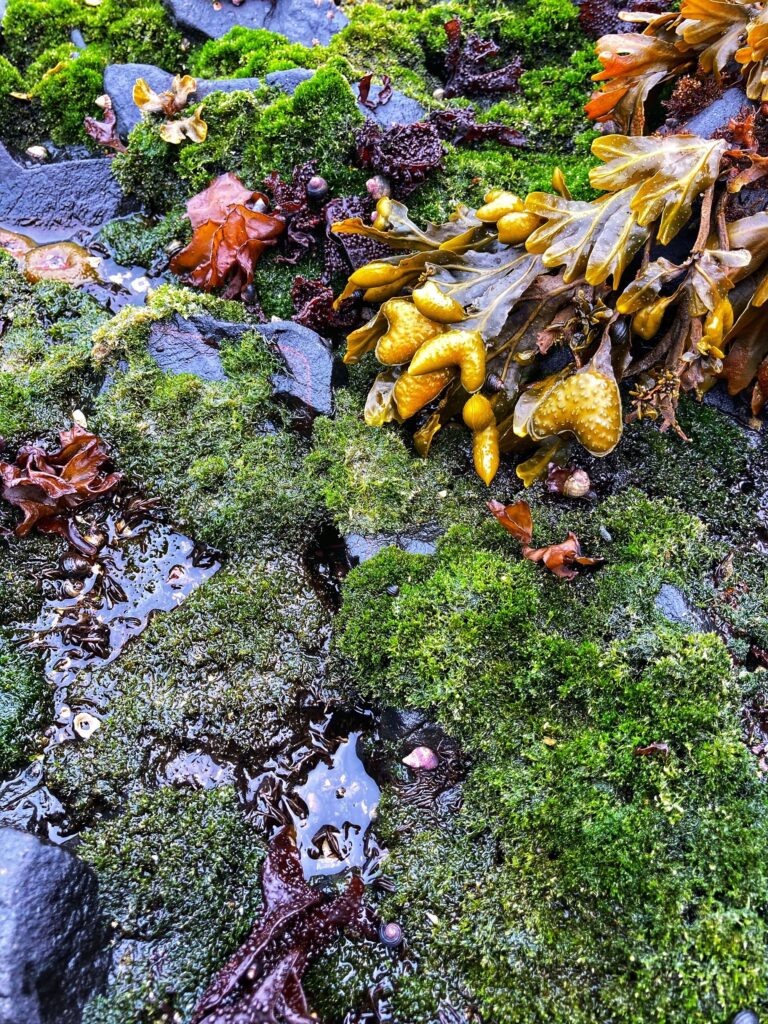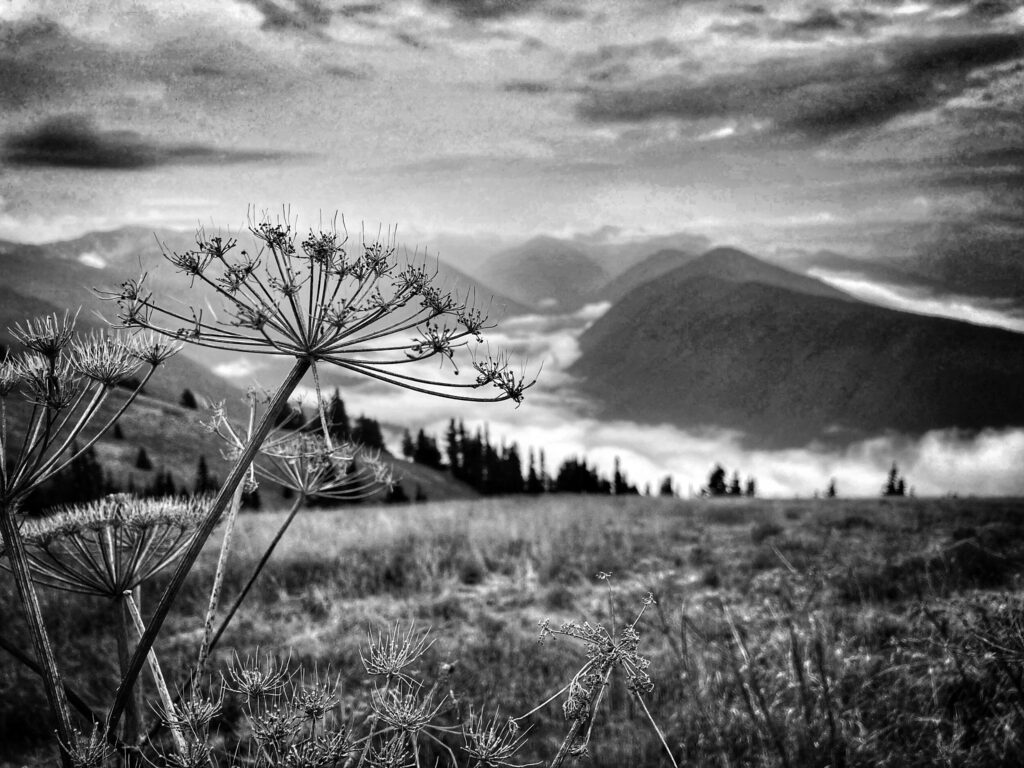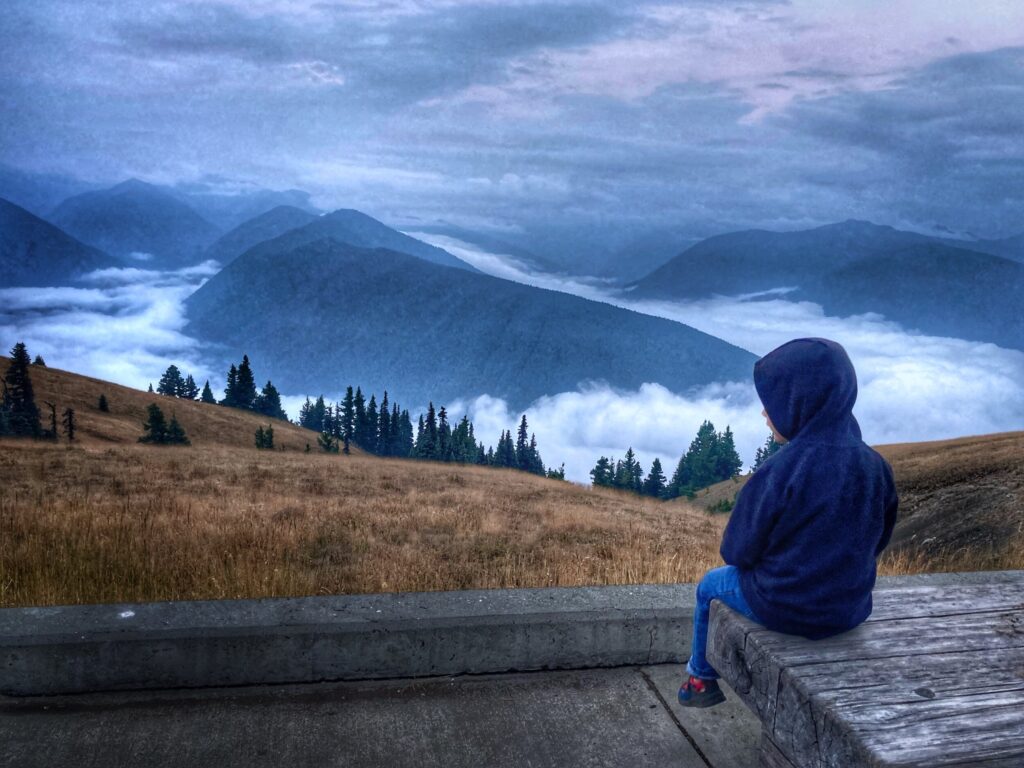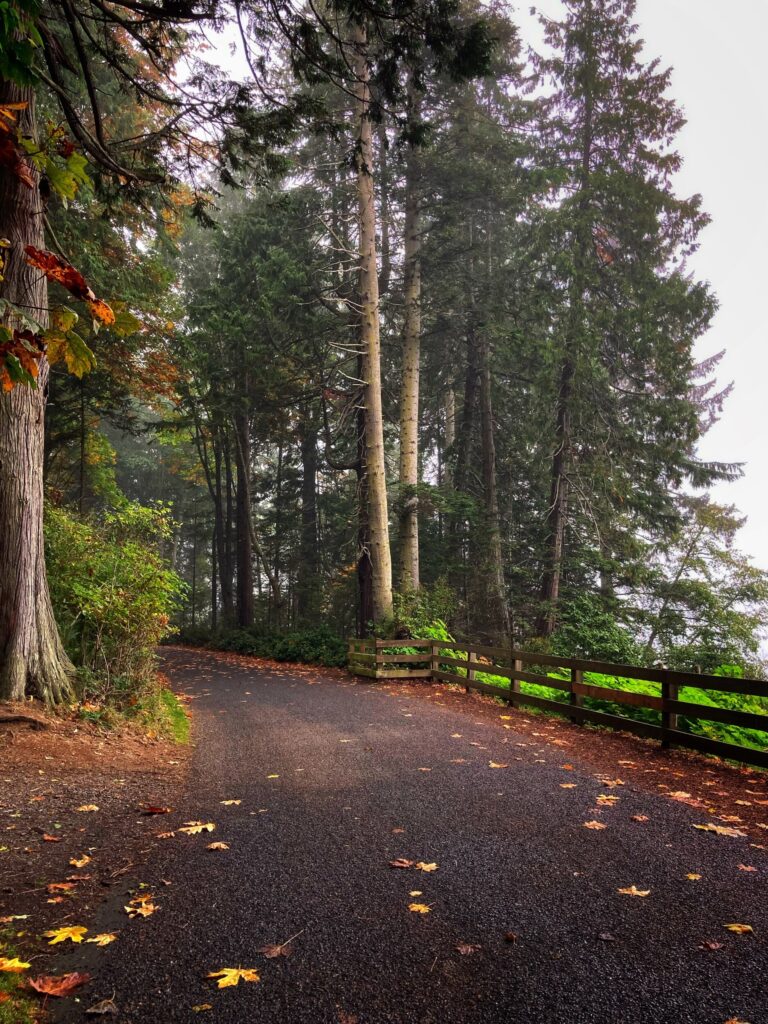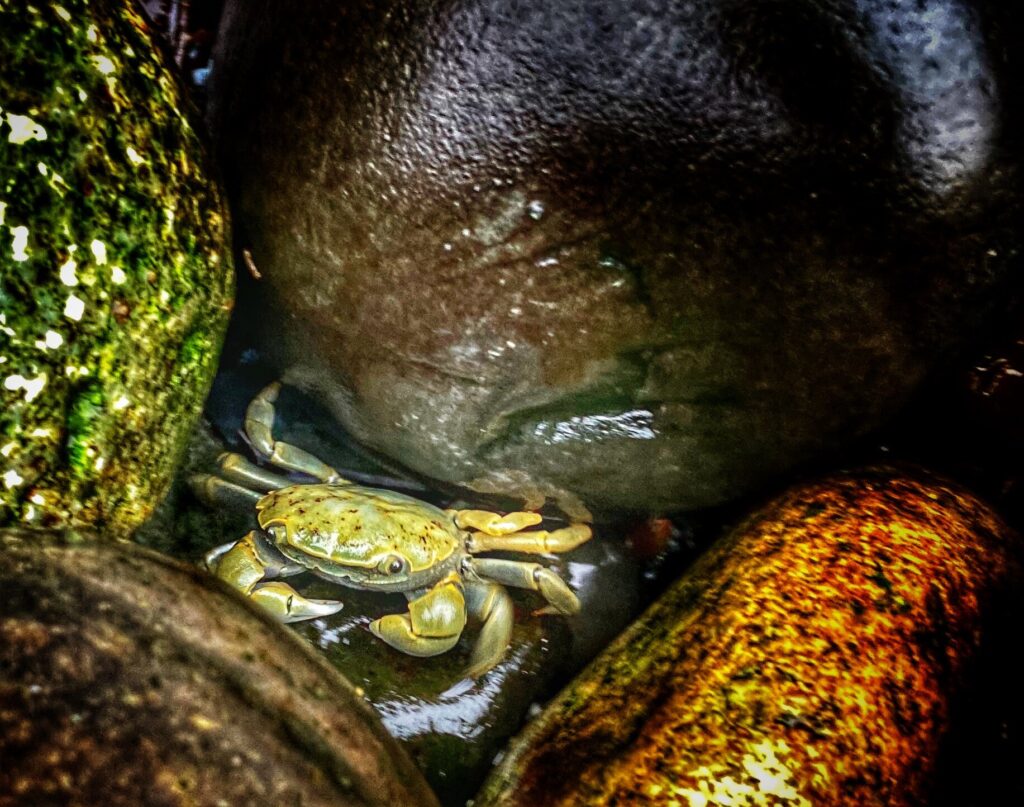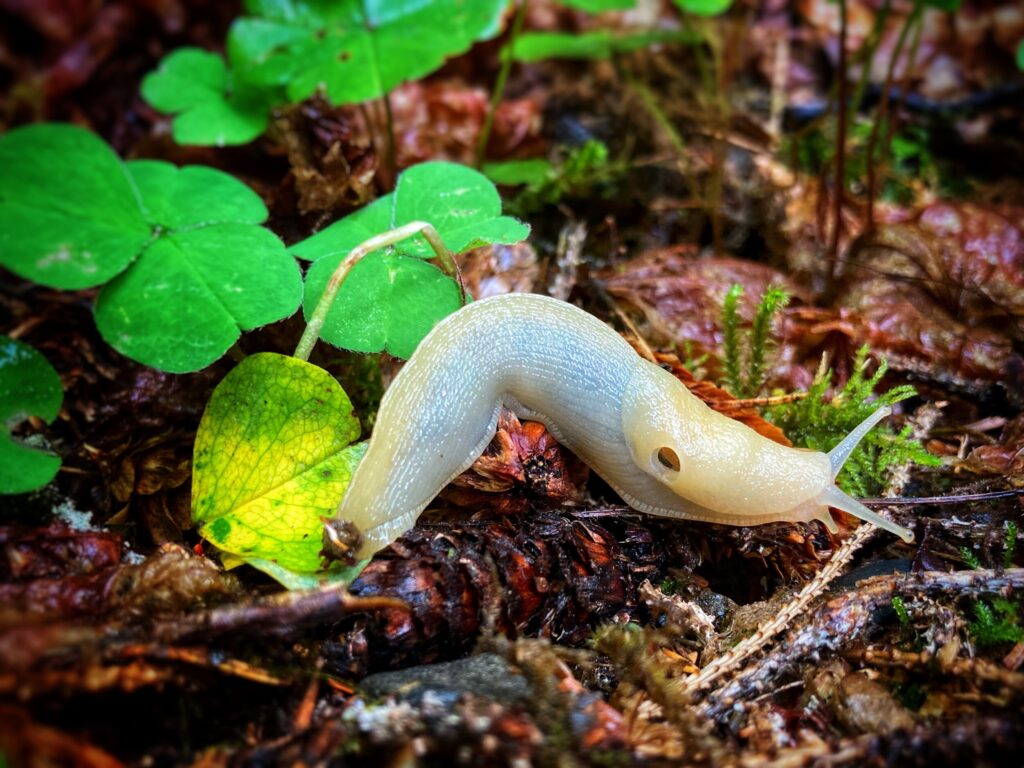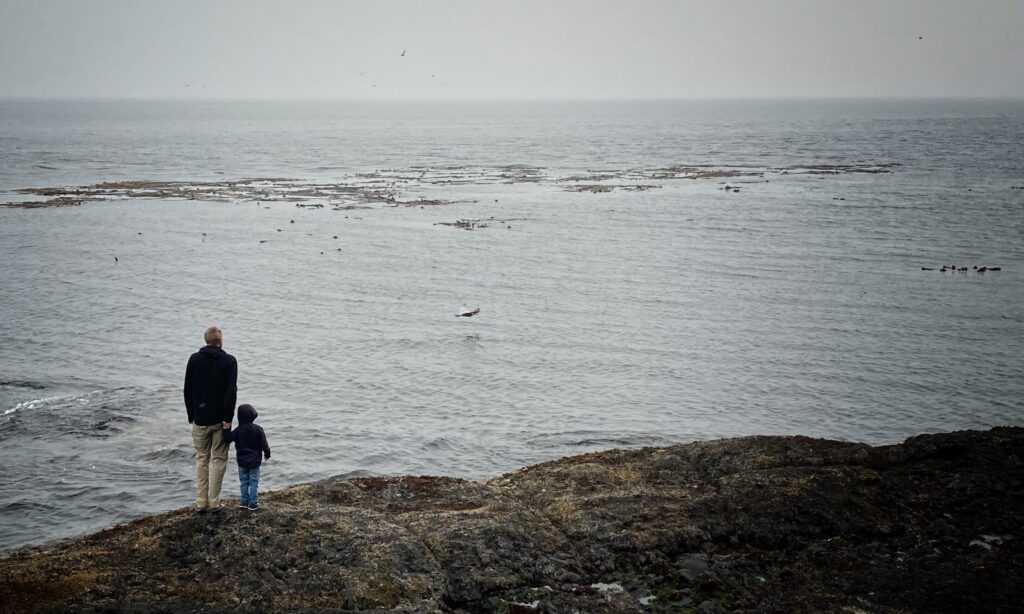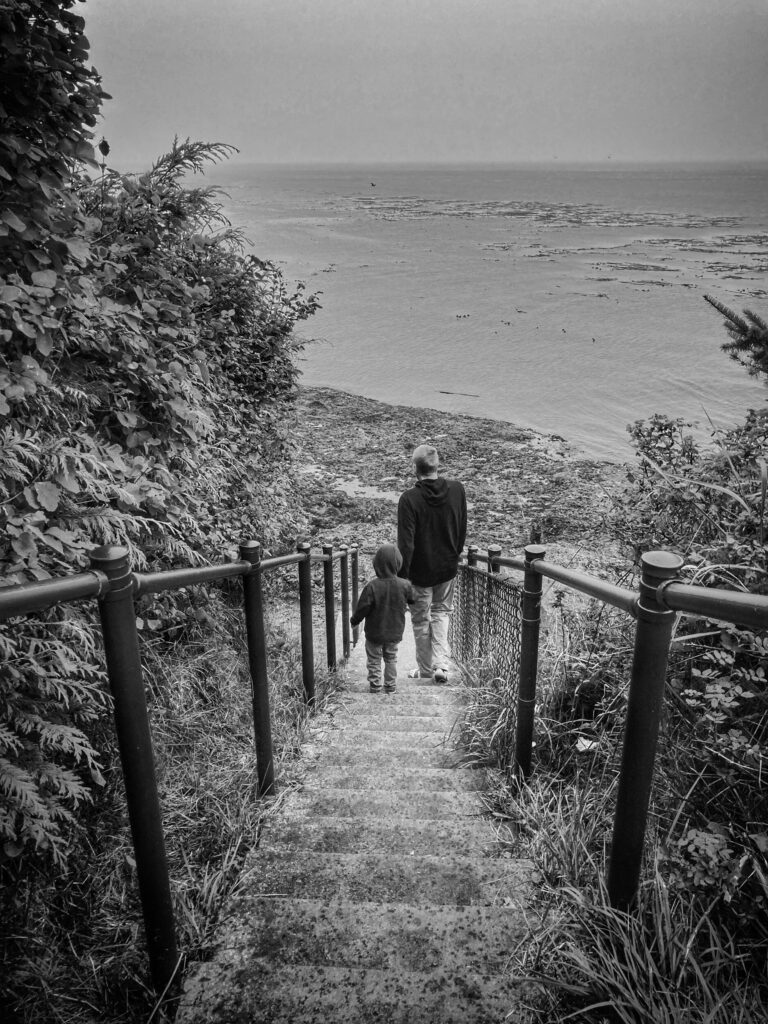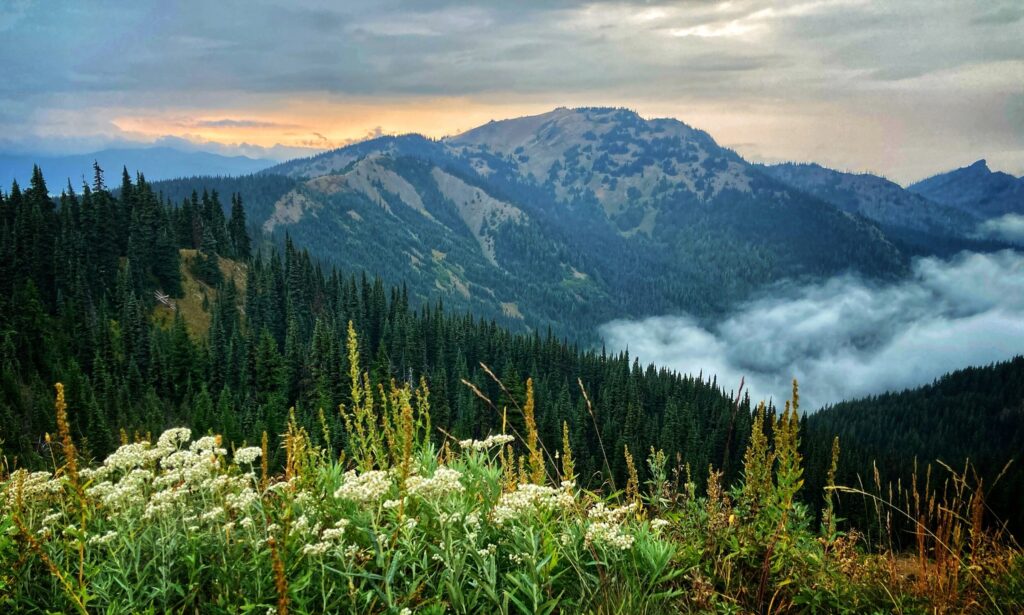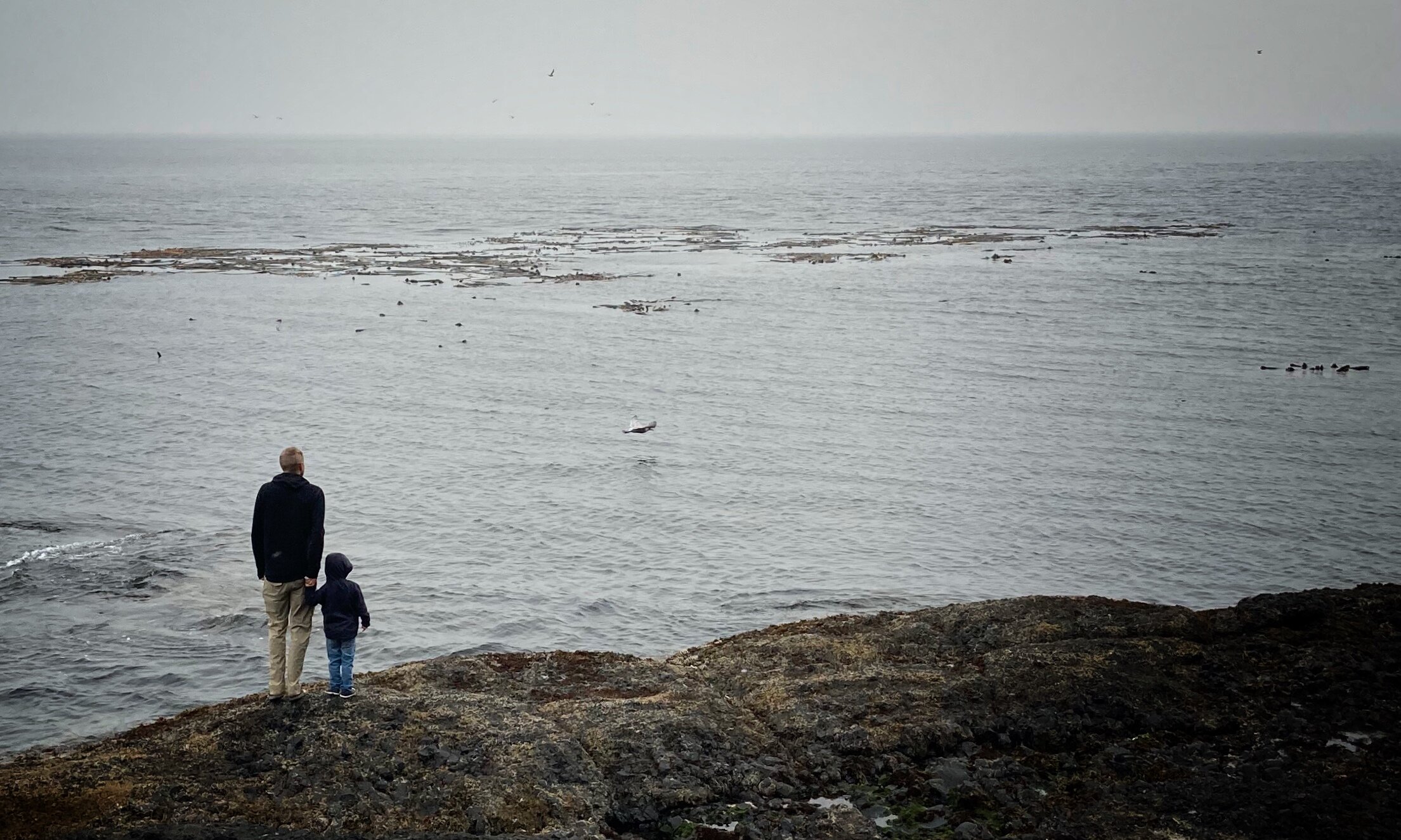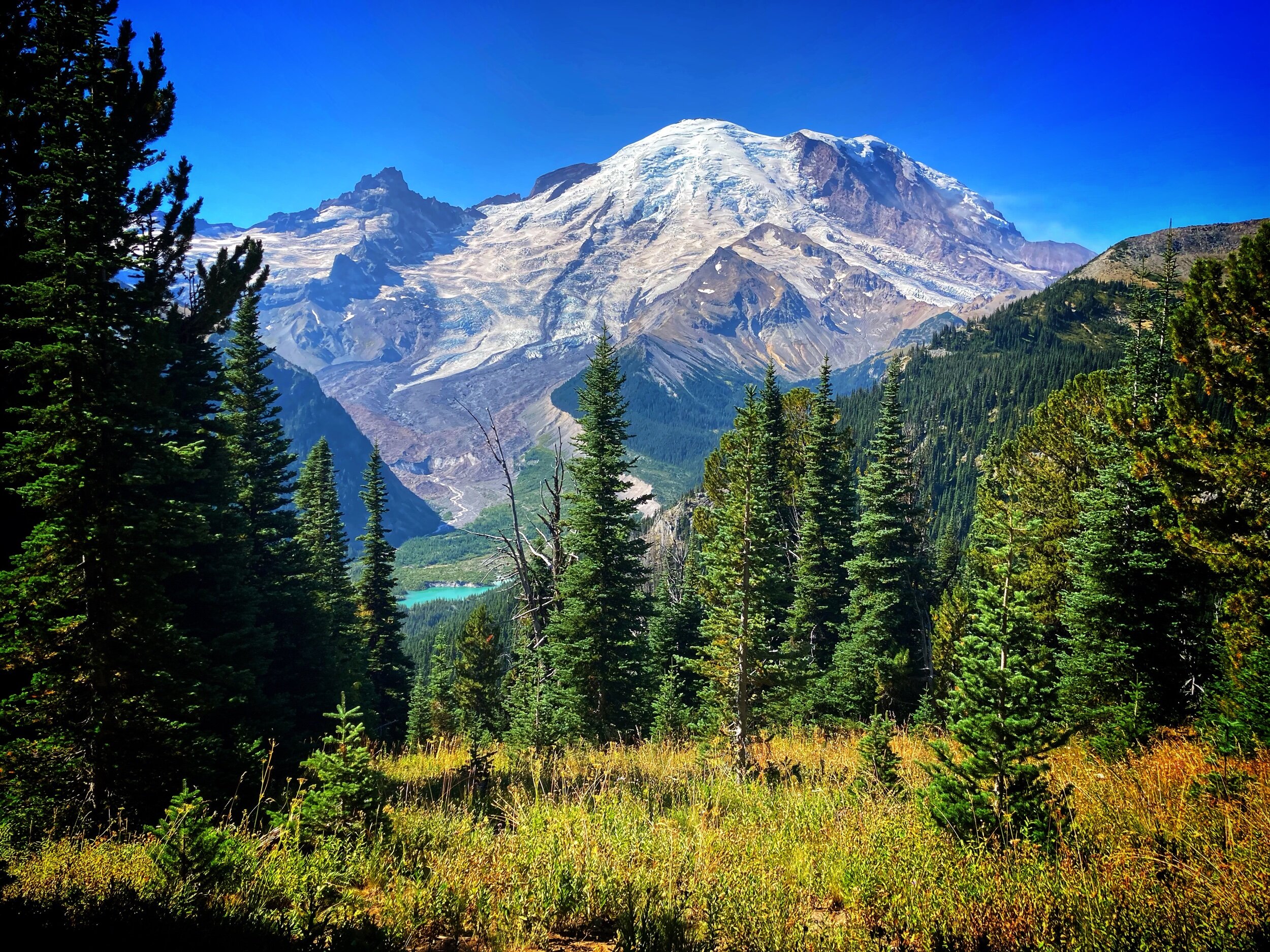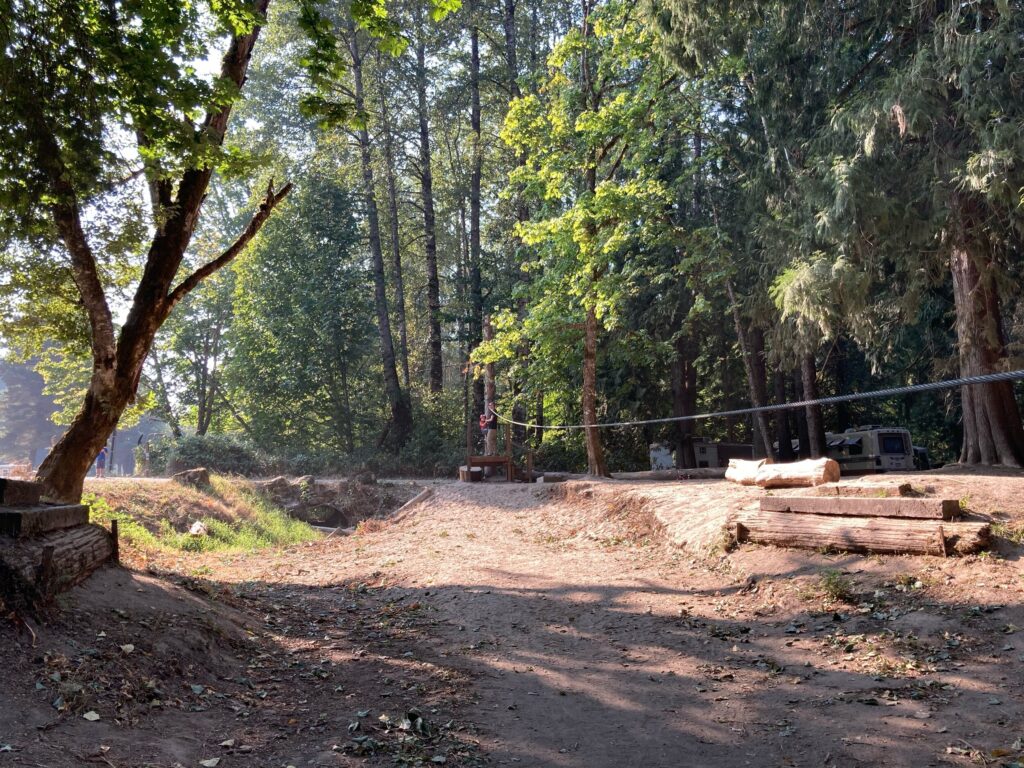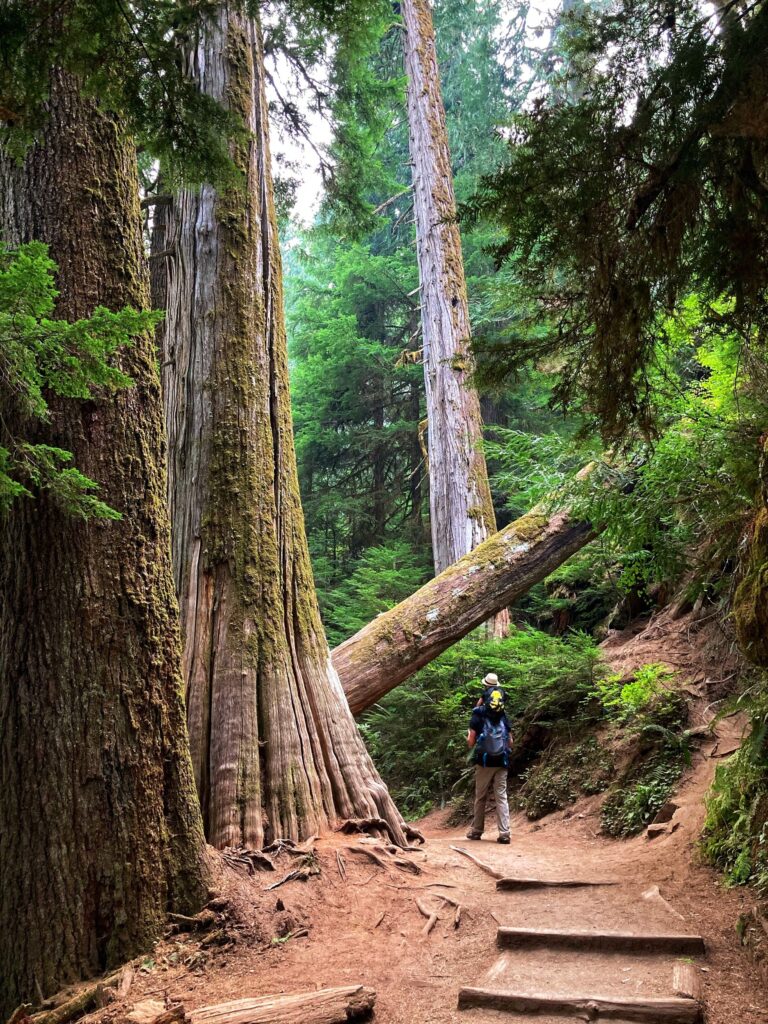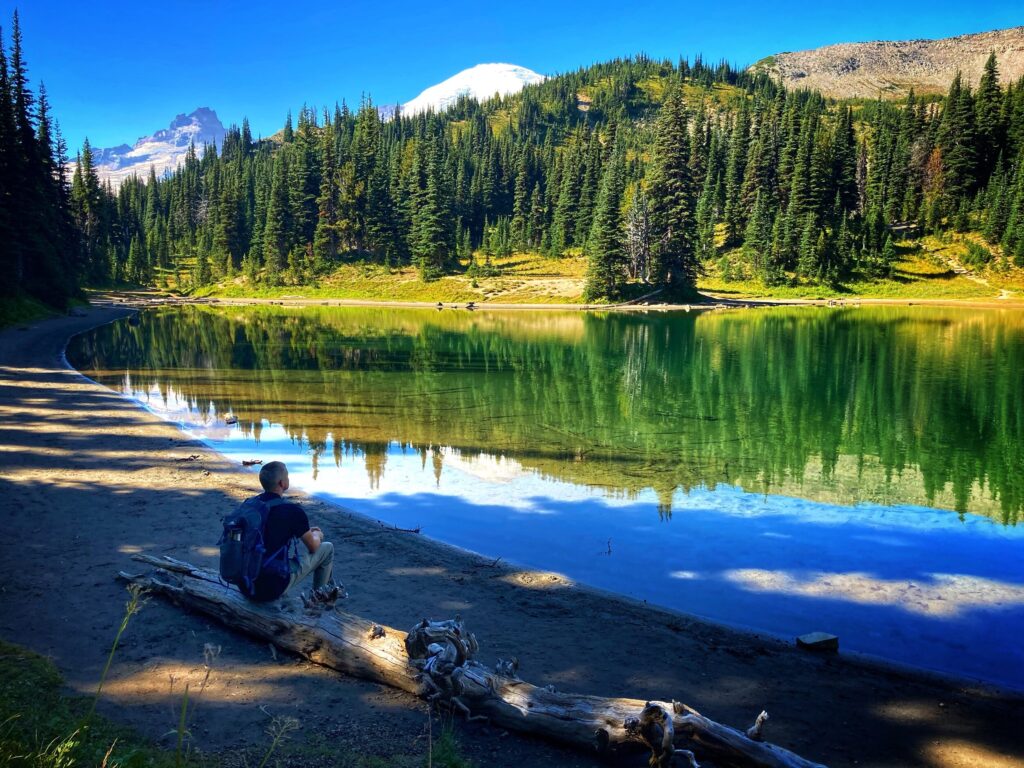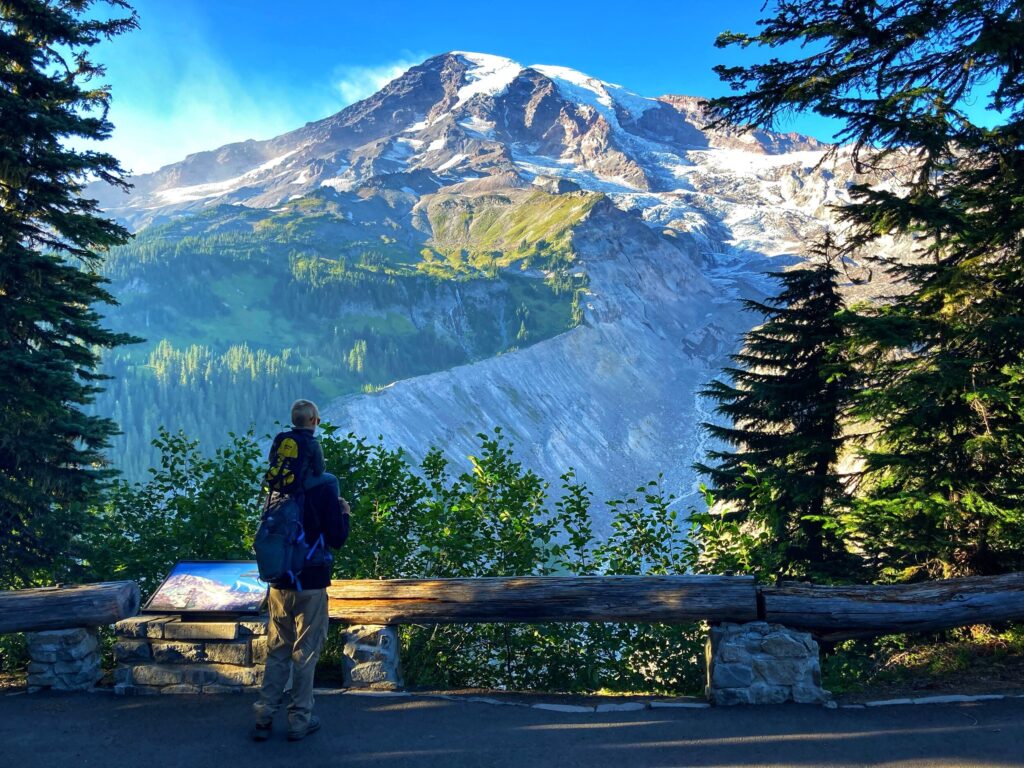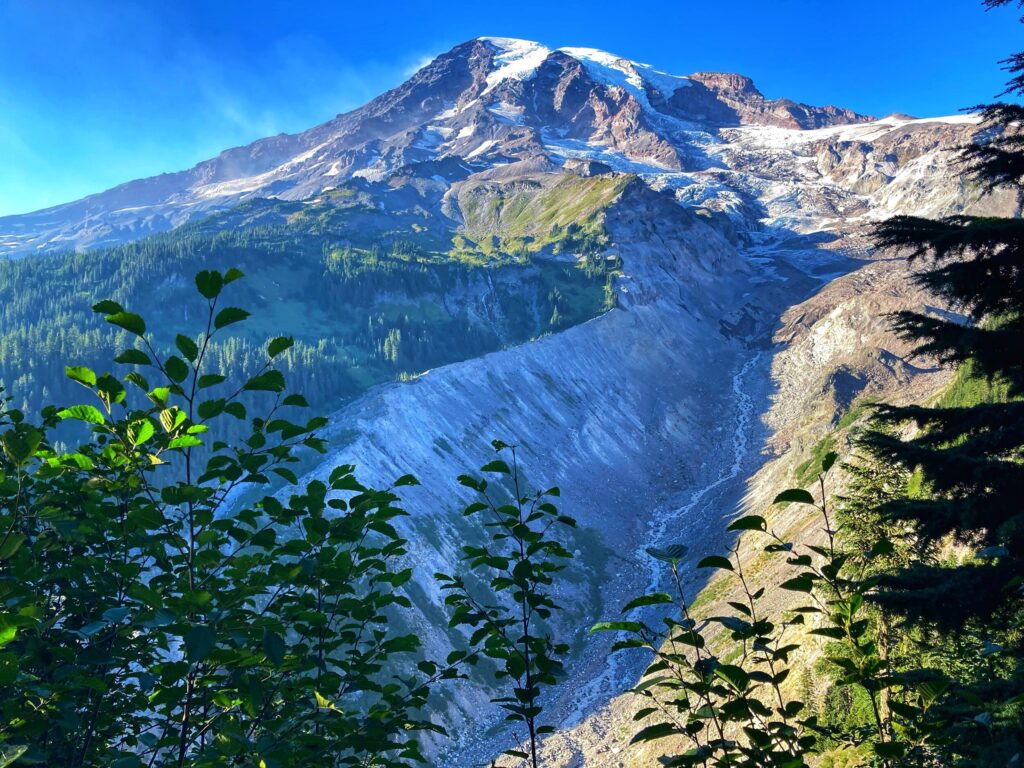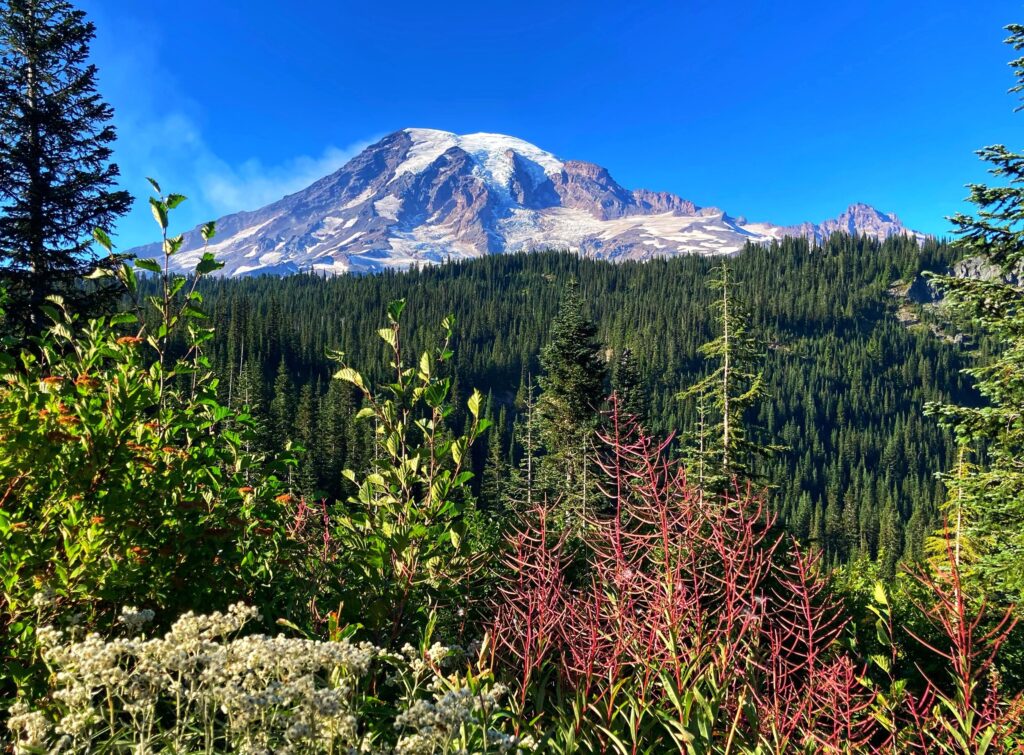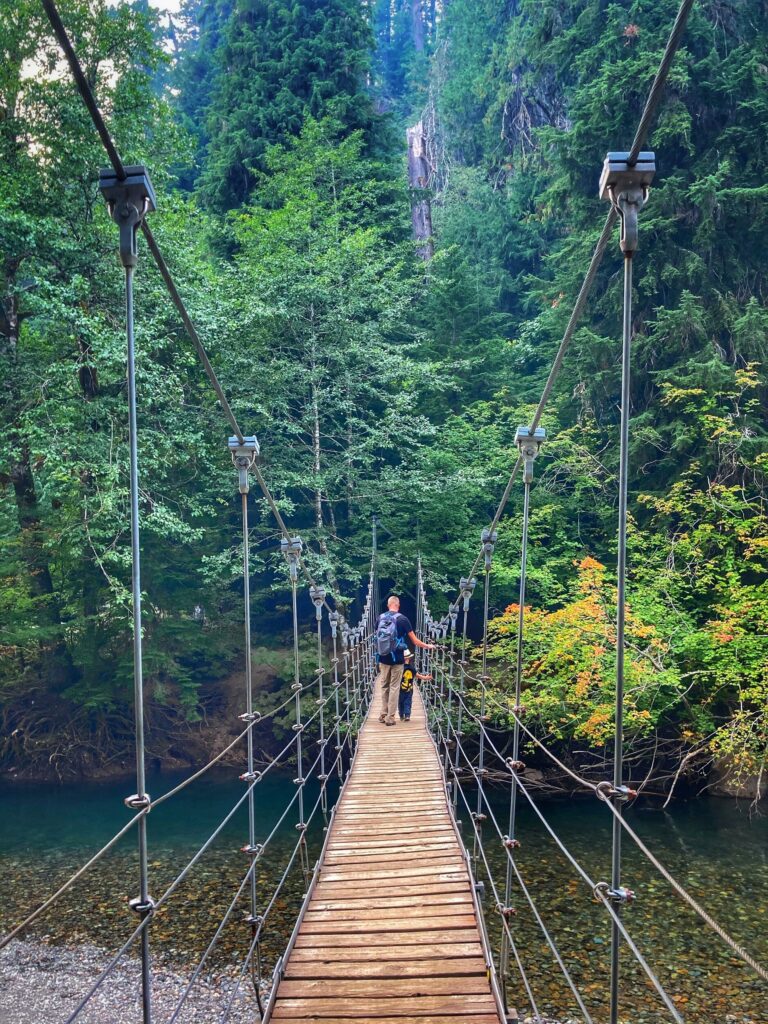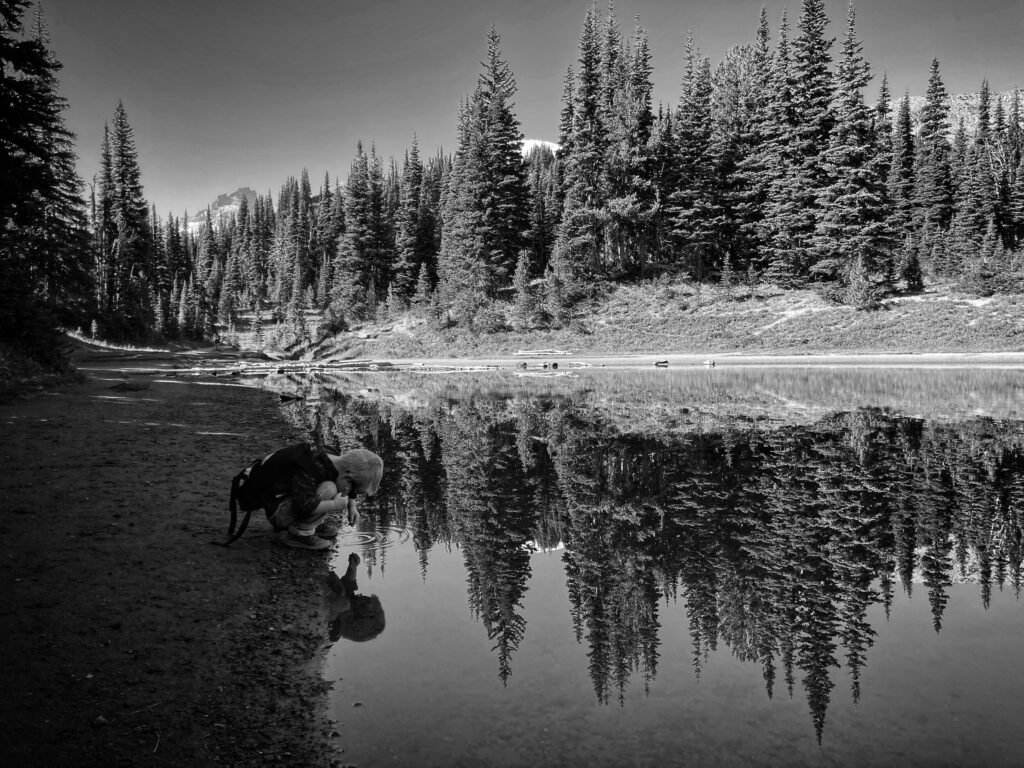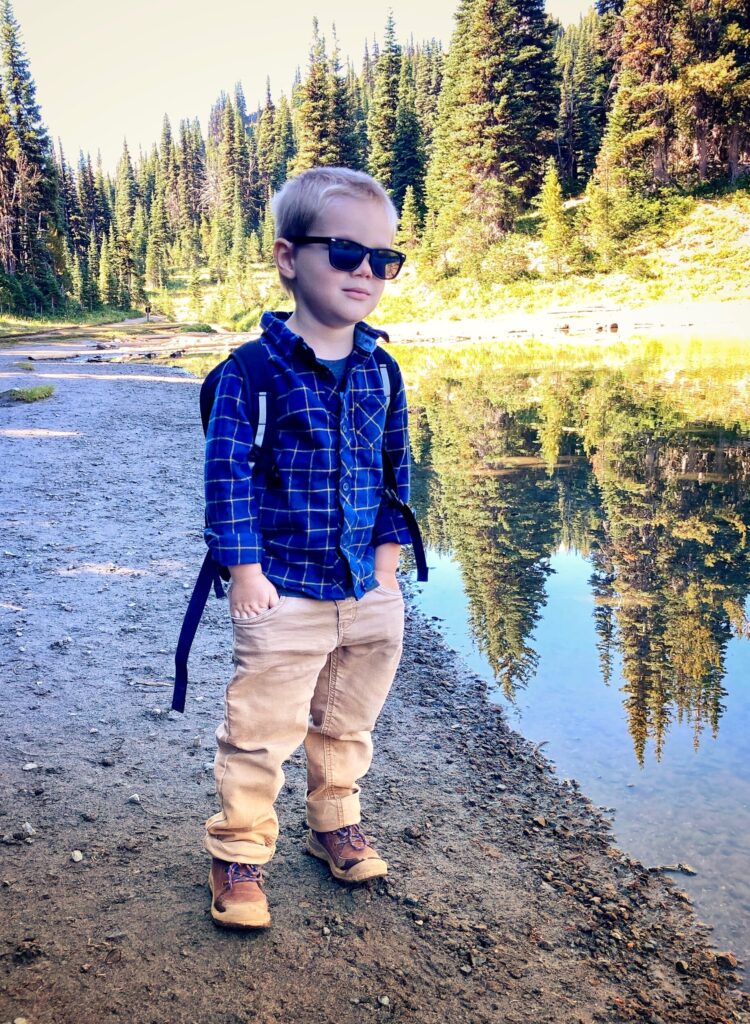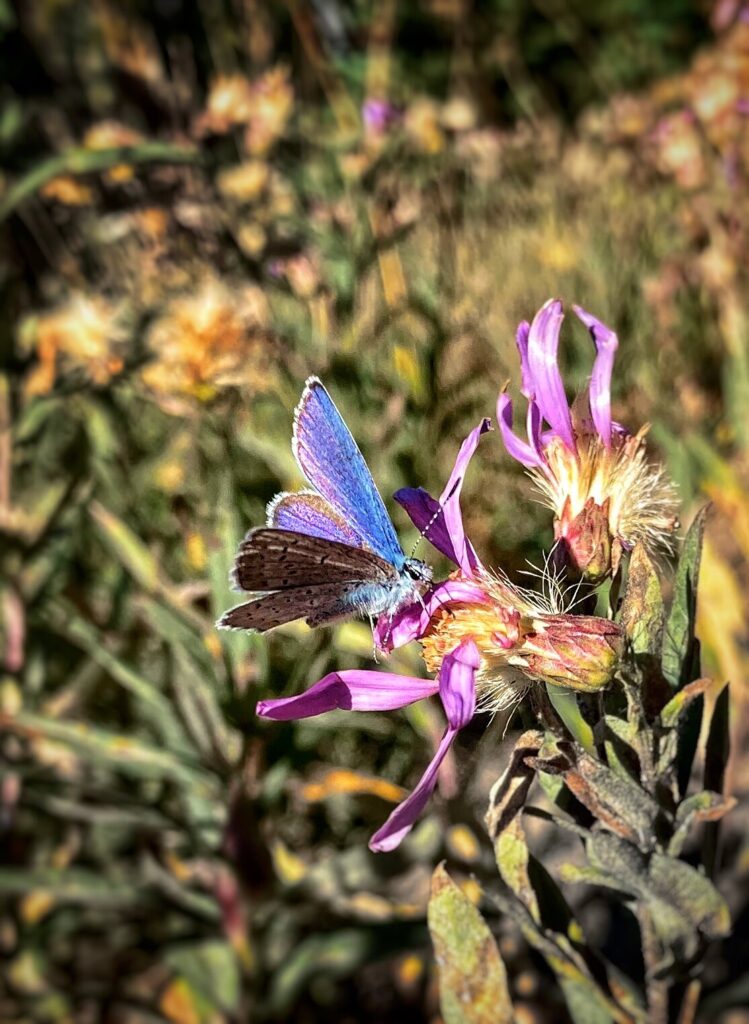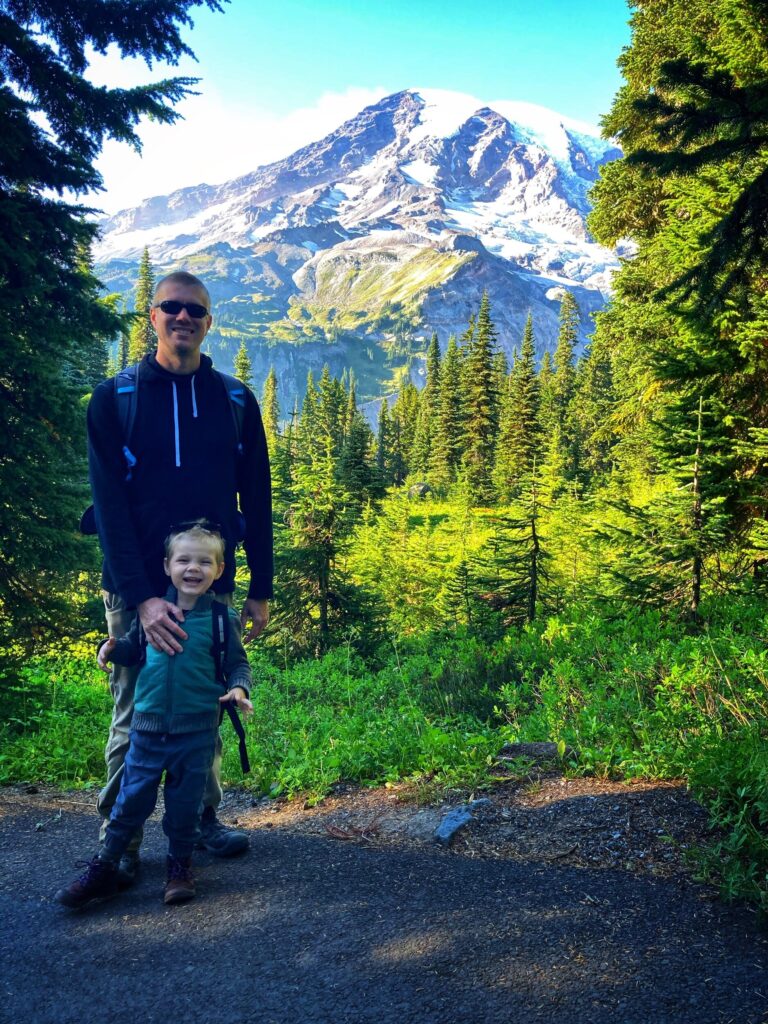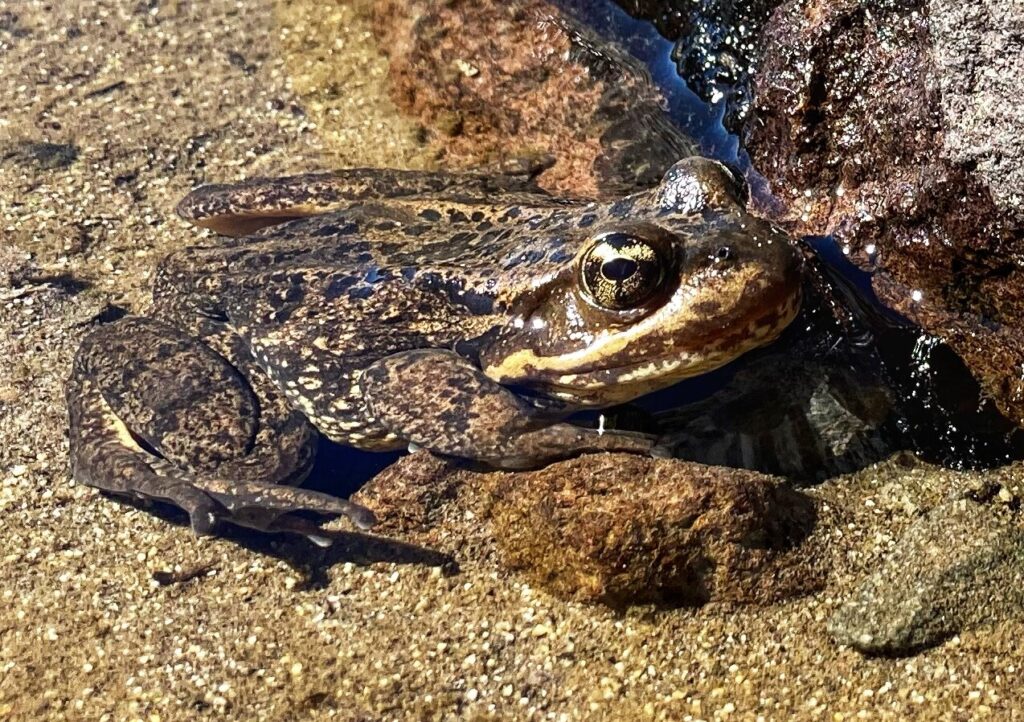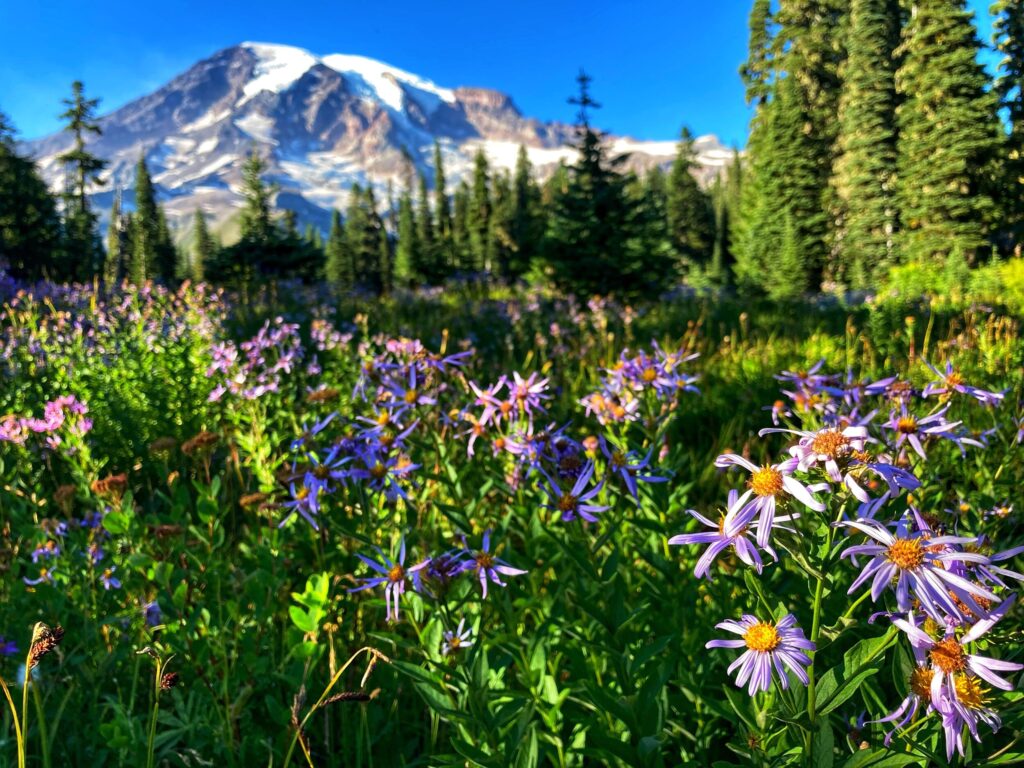Dates we visited: September 15th-18th 2020
Where we stayed: Port Angeles KOA, 7 Cedars Casino
The city of Port Angeles, WA was our basecamp for visiting Olympic National Park. Unfortunately, when we arrived, wildfire season was kicking into high gear on the West coast. While this area was generally lower risk due to it’s humid climate, the smoke rolling in from elsewhere in the country was dense, and the air quality was extremely poor. We decided to limit our time outdoors due to the bad air quality, but we still managed to visit each of the three distinct ecosystems in Olympic: the coast, the rainforest and the alpine mountain region.
Additionally, we experimented a little bit with different camping styles on this leg of our trip. We stayed a few nights in a casino parking lot, and “moochdocked” for the first time. More on this in a bit.
The Hoh Rainforest
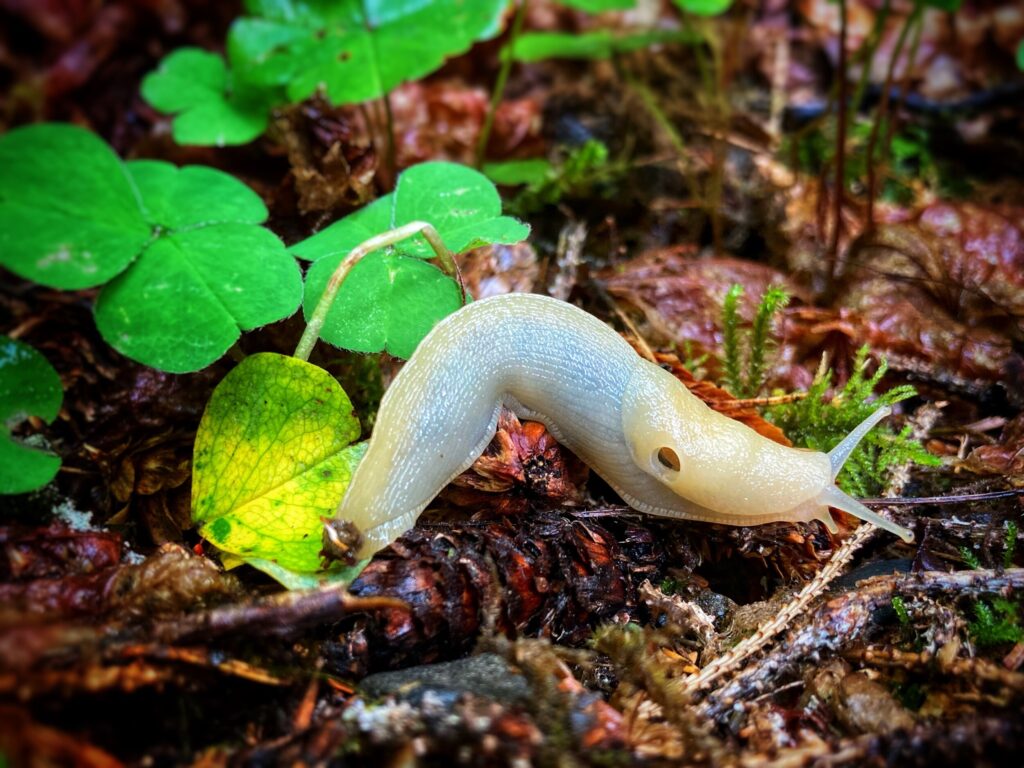
So let’s just get this out of the way… both Kristy and I were surprised to learn there was a rainforest here. Really, that there wa a rainforest anywhere in North America. Granted it is a temperate rainforest and not a tropical one, but still.
We chose the Hall of Moss trail in the Hoh rainforest, for a relatively quick hike that would give us a taste of this ecosystem. It proved to be a very enjoyable trail that wound through the forest, over streams, and offered up-close views of a variety of plants and animals. All the vegetation here is quite large due to the moisture in the area, giving the forest a prehistoric vibe, The trail was very toddler friendly, and Owen hiked the majority of it on his own.
We were hoping to catch a glimpse of a banana slug, which I had imagined in my mind to look pretty much just like a banana. Nature-spotter Owen was of course the first one of us to find one. As it turns out, they don’t look exactly like a banana, but they are still super big slugs, and really crazy looking.
The Coast
Olympic contains seventy miles of coast along the Pacific ocean, which can be explored in a variety of ways. We made a quick trip out to Rialto Beach and walked along the shore while the large Pacific waves rolled in. The sky was hazy with smoke from the wildfires in the area, but it was beautiful nonetheless. Swimming in the water here is discouraged due to the frequency of large uprooted trees from surrounding areas being washed ashore. I don’t think I would have wanted to swim anyway, as the beach is rocky, and the water chilly. We did however see a couple brave souls out surfing.
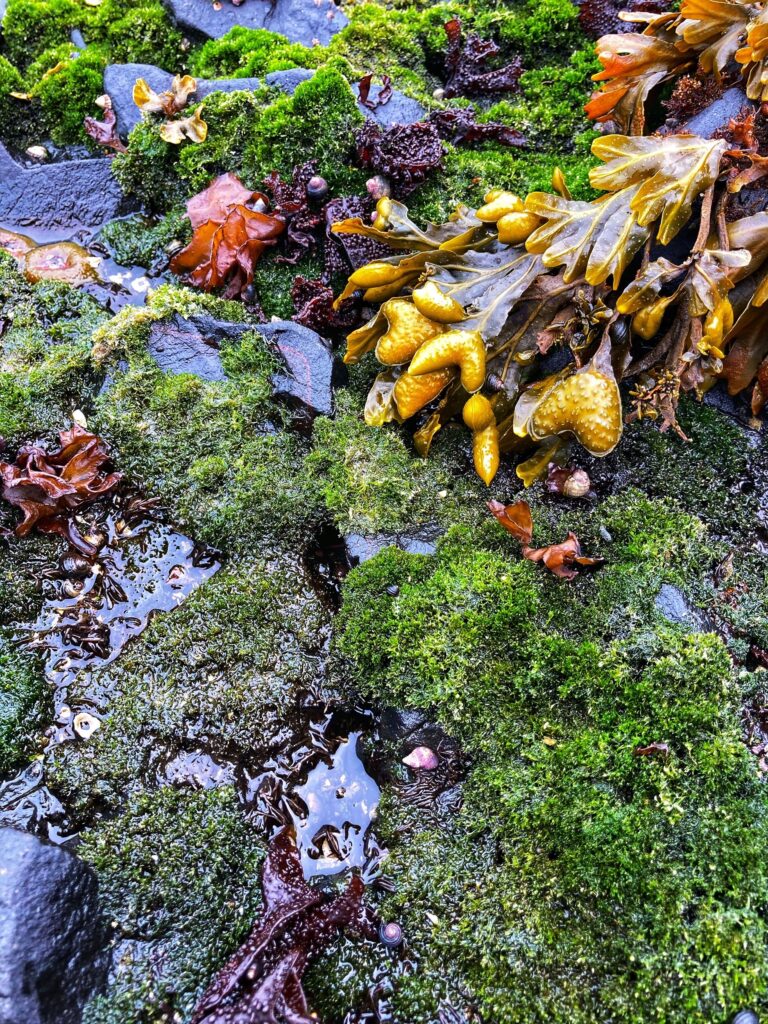
This was Owen’s first trip to the ocean, and he had a blast running along the shore and watching the waves come in. One particularly memorable moment was when a large wave caught us a little off guard and Owen and I ended up with sopping wet pants and hiking boots. I think Kristy had a good chuckle at us from her dry vantage point a little higher up the beach.
While not technically part of Olympic National Park, we also stopped at the Salt Creek Recreation Area, which is along the coast of the inland bay. This coastal area experiences a big swing from high tide to low tide, and offers a unique opportunity to explore the tide pools during low tide. We hopped around on the slick rocks and saw crabs, mussels, and a variety of plant life.
TIP: Salt Creek Recreation Area is in the vicinity of Olympic. It is free for day use, and is much less busy than some of the popular areas in the National Park. Check the tide charts so that you can time your visit at low tide and explore the tide pools.
TIP: Salt Creek Recreation Area is in the vicinity of Olympic. It is free for day use, and is much less busy than some of the popular areas in the National Park. Check the tide charts so that you can time your visit at low tide and explore the tide pools.
The Mountains
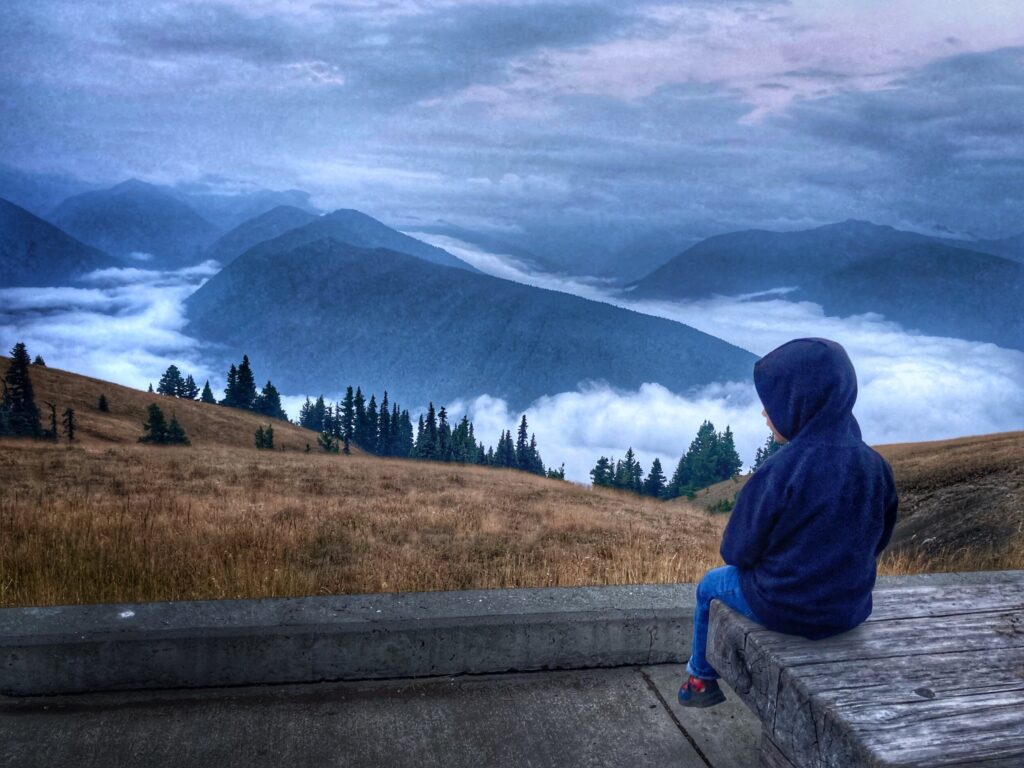
The alpine mountain ecosystem in Olympic might as well be its own park with how different it is from the other two areas. We took an evening drive up to the Hurricane Ridge visitor center to experience this part of Olympic. We found the area pretty much deserted, save for a newlywed couple and their wedding photographer taking a few pictures. It was downright cold coming from sea level up to 5,242 feet, and the damp air due to the proximity to the coast created low clouds that flowed through the valleys.
While we were there, we completed the short, but enjoyable Cirque Rim Nature Trail hike. I’m told that on a clear day you can see to the coast or even to the Canadian border here, but the fog and smoke on the day we visited limited the views. However, those same factors combined to make for a pretty spectacular sunset.
The drive down from Hurricane Ridge proved to be one of the most unanticipated, white-knuckle drives of our trip so far. The fog had rolled in quickly, and in the dark, our visibility was cut down to about 10-20 feet in front of the truck. That, combined with the steep mountain roads without guardrails, led to a very slow drive back down the mountain. We made it safely though, and we’re glad we were able to experience an evening at Hurricane Ridge.
Olympic Game Farm
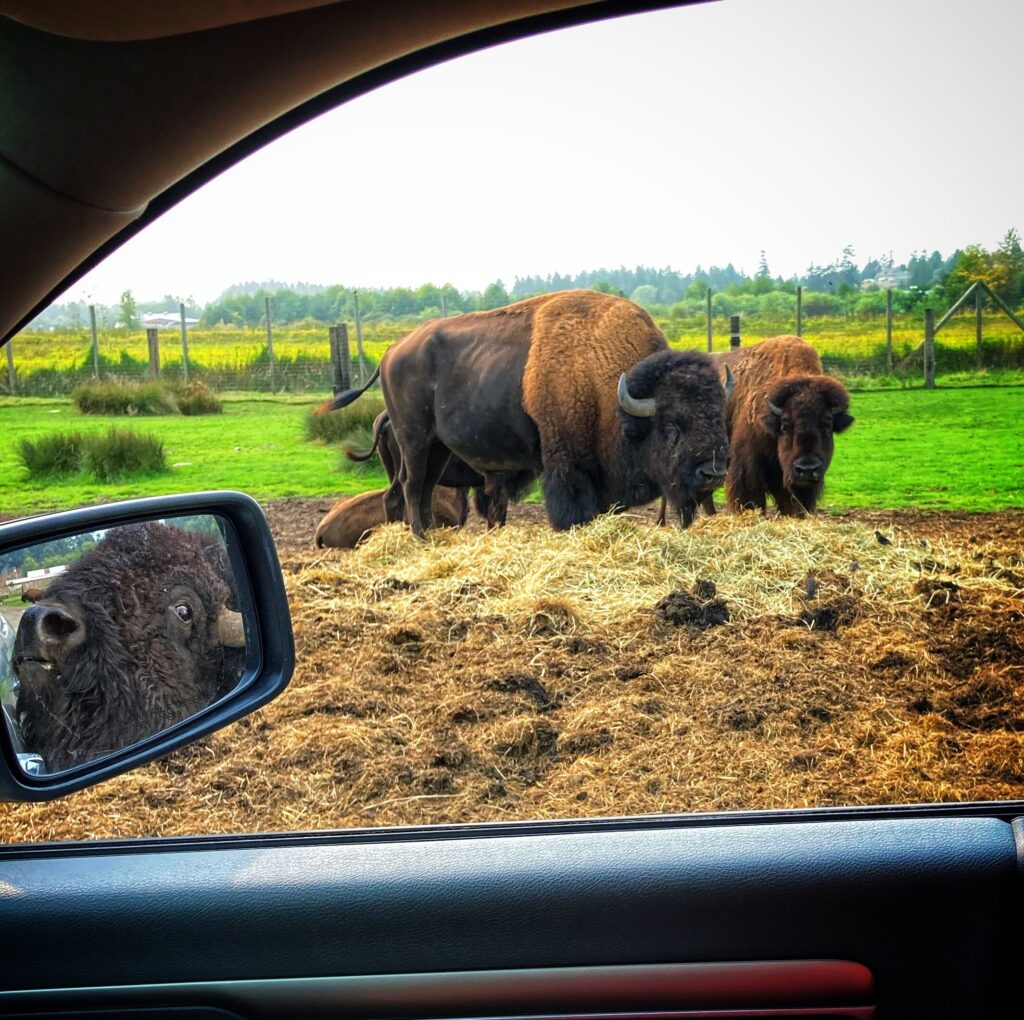
On the recommendation of one of our friends, we also visited the Olympic Game Farm. We were able to drive through the farm and get an up close look at tons of animals like bison, bears, llamas and elk. The animals here are generally re-homed or rehabilitated, or come from other licensed facilities. Owen thoroughly enjoyed seeing these creatures so close. If you are in the area, this is a fun attraction that is sure to be enjoyable for kids and adults alike.
Casinos and Moochdocking
During this leg of our journey we took the opportunity to try out a few new styles of camping. First, we tried a few nights in a casino parking lot. While this might sound like an odd choice for our family, it worked out quite well. We stayed at the 7 Cedars Hotel and Casino near Sequim. The stay was FREE, and they had about ten spots in the back of the parking lot with water and electric hookups. The catch was you have to sign up for their players club card in the casino, but there is no minimum spend. We did choose to buy one of our meals from the restaurant, and tried our luck at a few slots while we were there…we didn’t win. Aside from the spots not being particularly level, this worked out awesome for us.

We also executed our first “moochdocking” experience with a friend in the Seattle area. For those unfamiliar with the term moochdocking, it is when you stay in a friends driveway or on their property, and if you are lucky they may let you mooch their electricity and water. Special thanks to Angela from Tread Lightly Retire Early and her family for letting us crash with them for a few days.
Angela has an epic garden and Owen enjoyed helping out with the harvest. We all greatly enjoyed the bounty that they graciously let us keep. It was nice to spend a little time with friends and take advantage of some of the Seattle area restaurants and breweries.
Olympic is huge, and has a ton of interesting things to check out. We limited our time outside here due to the terrible air quality from the wildfires, and as a result we would love to return at some point in the future to experience more of the park.
Our original plan after Olympic was to head down the West coast through Oregon and California, but due to the severe fires, we called an audible and decided to head back inland through Idaho to Nevada and Utah. More on that in future posts!
Olympic National Park Gallery
Olympic has three distinct ecosystems that each warrant their own National Park. We were battling smoke and poor air quality from a particularly severe wildfire season, but we were still able to get in a short visit to each area of Olympic.
